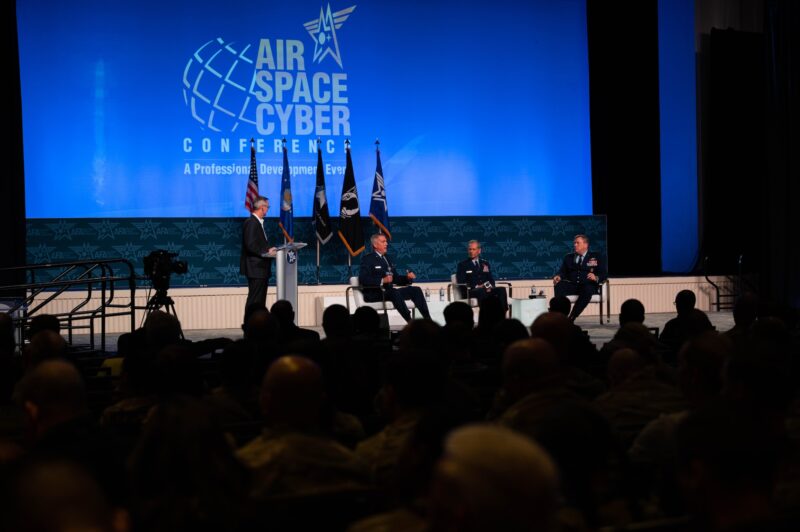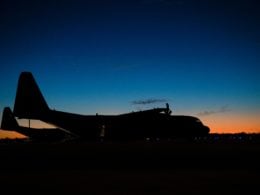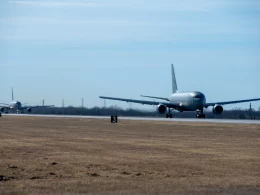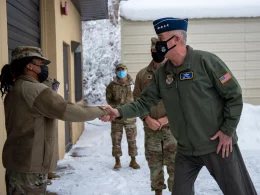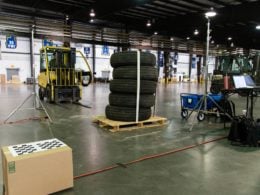NATIONAL HARBOR, MD —
Gen. Mike Minihan, commander of Air Mobility Command, participated in a panel titled, “Ready to Compete, Fight, and Win in the Indo-Pacific” with the Pacific Air Forces commander, Gen. Kenneth Wilsbach, and the Air Force Special Operations Command commander, Tony Bauernfeind, Sept. 13, at the Air and Space Forces Association, Air, Space & Cyber Conference at the Gaylord Hotel, National Harbor, Maryland.
The AFA panel was moderated by Gen. (Ret.) Terrence “Shags” O’Shaughnessy, former commander of North American Aerospace Defense Command and the United States Northern Command.
Since Minihan delivered the Mobility Manifesto last year, the command aggressively attacked the two problem statements he identified: The Joint force is not ready to fight and win inside the First Island Chain. And, the joint force isn’t as ready, integrated, or agile as they think they are.
“During Mobility Guardian we received numerous insights into our strengths and improvement areas,” said Minihan. “We intentionally drove MG23 to a place where all the loose ends were not cleaned up. We strained ourselves, not trained ourselves.”
Minihan said that it became evident early in the exercise that there were three bins of concerns. He detailed the need to solidify the Command Relationships (COMREL) to enable mission execution; invest in command and control (C2) connectivity and procedures to manage mission execution; and codify the fundamentals across the Command to ensure we can “Explode into Theater” to meet the Combatant Commander’s requirements.
While Minihan is proud of the significant strides the command has made within a year – between the retrograde in Afghanistan, the evacuation of Kabul, support to Ukraine, the earthquakes in Turkey and Syria, and planning and executing exercise Mobility Guardian 2023 – he emphasized there’s still more work to do.
“I’ll never admit to being ready enough, integrated enough, and agile enough … We have an incredible amount of work to do here,” he said.
Looking to the future Minihan said there is a need for better connectivity within the mobility fleet, because connectivity drives Joint Force lethality. Investing in C2 connectivity will ensure mission execution and create expedited movement into theater.
When asked what the command would need in order to implement these changes, Minihan noted that resources go to the trusted and prepared and that AMC aims to be both.
He outlined his goal to increase connectivity among the Mobility fleet from three percent to 25 percent by Fiscal Year 2025.
“This would be a significant advancement and make an enormous impact on the battlefield instantly,” he said
Despite the gaps identified during MG23, Minihan asserted that the forces are more integrated after Mobility Guardian.
“I can confidently say we are ready to fight and win inside the First Island Chain, and the Joint force is more ready, more integrated and more agile than it was a year ago,” said Minihan. “If this goes down in the Pacific theatre, AMC will be the most relied upon force in the history of warfare.”
Each commander stated they will continue to leverage their unique capabilities so that if and when called upon, their Airmen and joint partners, are prepared to execute Agile Combat Employment in the Indo-Pacific.




